Publications
RIHN Science Series
RIHN researchers and projects also publish a variety of individual volumes on specific themes.
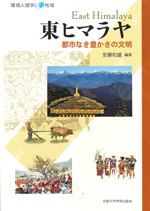
East Himaraya
- Edited by ANDO Kazuo
- Kyoto University Press
- March 20, 2020
- 540 pages, Hardcover, 6,500 yen + tax
- ISBN: 978-4-81400-273-3
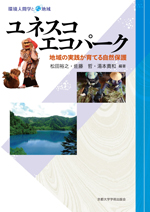
Biosphere reserves: Nature conservation fostered by practices in local communities
- Edited by MATSUDA Hiroyuki, SATO Tetsu and YUMOTO Takakazu
- Kyoto University Press
- March 31, 2019
- 350 pages, Hardcover, 4,400 yen + tax
- ISBN: 978-4-8140-0205-4
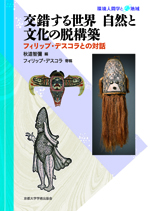
Crossing World Beyond Nature and Culture: Dialogue with Philippe Descola
- Edited by AKIMICHI Tomoya
- Kyoto University Press, March 30, 2018 (⇒ Publisher's HP)
- 432 pages, Hardcover, 4,900 yen + tax
- ISBN: 978-4-8140-0147-7
Mondes entrecroisés par-delà nature et culture – dialogue avec Philippe Descola
- Avant-propos
- Préface
- Introduction Déconstruction du savoir en sciences humaines – pour une révolution de la reconnaissance du monde
- Ière PARTIE : La Nature se vengera-elle des êtres humains ?
- I Les proies bienveillantes – Le traitement du gibier dans la chasse amazonienne
- Ch. 1 La baleine et l’homme – Autopsie de la vision de la nature chez les Japonais
- Ch. 2 La figurologie de l’homme-oiseau – Déguisement et métamorphose
- IIème PARTIE : La Nature est-elle amie de l’homme ?
- II Le sauvage et le domestique
- Ch. 3 Paturage et reconnaissance du monde – Relations entre l’homme et l’animal dans les sociétés pasteurs de l’Afrique de l’Est
- Ch. 4 Sur les animaux expérimentaux et la « Nature » dans la neurophysiologie
- IIIème PARTIE : La Nature a-elle son identité subjective ?
- III A qui appartient la nature ?
- Ch. 5 La théorie de l’animisme selon Ph. Descola : l’histoire de l’esprit humain et son passage schématique en forme d’un « Z » inversé
- Ch. 6 Nature et identité subjective
- IVème PARTIE : La Nature franchit-elle ses frontières ?
- IV La Fabrique des images
- Ch. 7 Représentations de la nature et la culture révélées dans les masques
- Ch. 8 La portée théorique de l’« anthropologie de la figuration »
- Epilogue Un horizon découvert par la déconstruction de la nature et la culture
- Postface
- Index
Table des matières
i
Ken’itchi Abé
Président du comité éditorial de la collection « Sciences de l’homme et de l’environnement et les régions »
Professeur à l’Institut de recherche pour l’humanité et la nature
iii
Tomoya Akimichi
1
Tomoya Akimichi
45
Philippe Descola
77
Tomoya Akimichi
113
Tomoya Akimichi
155
Philippe Descola
193
Itsuhiro Hazama
221
Mitsuho Ikeda
249
Philippe Descola
265
Hitoshi Yamada
287
Augustin Berque
305
Philippe Descola
333
Kenji Yoshida
365
Daisuke Shimoyama
395
Tomoya Akimichi
419
Tomoya Akimichi
428
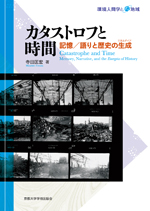
Catastrophe and Time
Memory, Narrative, and the Energeia of History
- By TERADA Masahiro
- Kyoto University Press, March 30, 2018 (⇒ Publisher's HP)
- 888 pages, Hardcover, 9,200 yen + tax
- ISBN: 978-4-8140-0151-4
- In Japanese with English summary
By narrating the event, human being make past present, and at the same time, by doing so it make present past. Especially to those who encounter the catastrophe this dimension of time and narrative is crucial because humanity is a creature of narrating the event. How is it possible and how did this species do so? Focusing on the Great Hanshin-Awaji Earthquake in 1995, the 3.11 Tohoku triple catastrophe in 2011, both happened in Japan, and other natural and man-made disasters including war and the Holocaust (the Shoah), the author Masahiro Terada, historian and “meta-historian” of human-nature relationship, investigates the way how the catastrophe passes across time from present to past and from past to present in museums, at memorials, and on the sites of place of memory. This is an inquiry into the modality of Anthropocenic response to one of the dramatic changes of the Earth.
- Prologue. Namazue Catfish Print and Presentism
- Introduction. Time, Catastrophe, and Energeia
- Part I. Catastrophe as an Event
- Part II. Catastrophe, Nation State, and the Modernity
- Part III. Catastrophe and Memory
- Part IV.Catastrophe Remains in the Environment: Keeping the Past as Monuments, Memorials, and in Sites
- Conclusion. Environment, Past, and Future as Seen from the Energeia of History
- Epilogue. Tracing Haruki Murakami’s “A Walk to Kobe”again
Table of Contents
Chapter 1. Catastrophe Remembered: Narrating the Present Catastrophe by Remembering the Past Catastrophe
Chapter 2. Records and Memories: Historical Consciousness and Transcendental Experience in the Japanese Historical Context
Chapter 3. To Be in Front of the Catastrophe: The Moment of Vortex
Chapter 4. Experiencing the Tremble: How Did Volunteers Experience the Catastrophe?
Supplementary Chapter 1. The Faces of Volunteers Speak: The Catastrophe Photographed
Gallery. Volunteers Came with the Wind: Photographs by Kozo Kitagawa
Dialogue 1. Picturing the Wind, Picturing the Light: A Dialogue with Kozo Kitagawa
Chapter 5. Recovering through the Unknown Dead
Column 1. Museum as a Medium Representing Time and Space
Column 2. How Does the Chinese National History Museum Narrate Recovery?
Chapter 6. Transparent Space, Flamboyant Time: Mourning and Reconstruction in Modern/Post-Modern Japan
Column 3. Tracing Haruki Murakami’s “A Walk to Kobe”
Column 4. What I thought in Aceh, Indonesia: Seven Years after the Great Indian Ocean Tsunami
Chapter 7. Tragedy and Narrative: Voices of the Dead
Chapter 8. Whose Memory? To Whom Is Memory Memorized? Die Kindheit in Kobe, or Childhood in Kobe
Dialogue 2. Woods of Folktale and the Narrative of Catastrophe: A Dialogue with Chinatsu Shimizu, Curator of the Sendai Medhiatheque
Chapter 9. Politics of Emotion: Dramatization of Catastrophe at Memorials
Column 5. What Landscape Tells: Impression at the Site of Auschwitz
Chapter 10. To be with Memory of the Catastrophe: Beyond Aporia of Conservation
Column 6. Visioning Invisible Landscape: Fukushima and Auschwitz
Supplementary Chapter 2. Naru-becoming and the Energeia of History
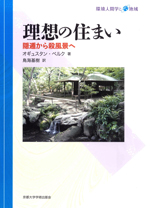
HISTOIRE DE L'HABITAT IDÉAL, De l'Orient vers l'Occident
- Edited by Augustin Berque
- Translated by Tomoki Toriumi
- Kyoto University Press
- January, 2017
- 470 pages, Hardcover, 6,000yen + tax
- ISBN: 978-4-8140-0051-7
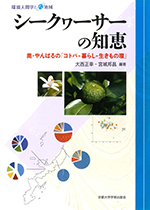
The Wisdom of the Shikwasha — Language, nature and lifestyle interactions in Oku-Yambaru
- Edited by ONISHI Masayuki, MIYAGI Kunimasa
- Kyoto University Press, March 2016
- 6,600 yen + tax
- ISBN: 978-4-8140-0025-8
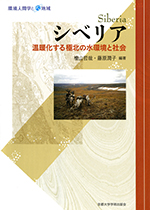
Siberia, Water and Social Environments in the Warming Far North
- Edited by HIYAMA Tetsuya, FUJIWARA Junko
- Kyoto University Press, March 2015
- 6,500 yen + tax
- ISBN: 978-4-87698-315-5
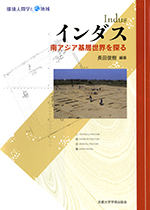
Indus, Investigating the Worlds found in Southern Asia Strata
- Edited by OSADA Toshiki
- Kyoto University Press, October 2013
- 5,500 yen + tax
- ISBN: 978-4-87698-300-1
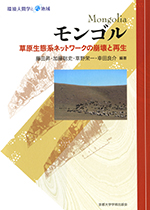
Mongolia, The Collapse and Regeneration of Grassland Ecosystem Network
- Edited by FUJITA Noboru, KATO Satoshi, KUSANO Eiichi
- Kyoto University Press, October 2013
- 6,800 yen + tax
- ISBN: 978-4-87698-299-8
▲PAGE TOP

